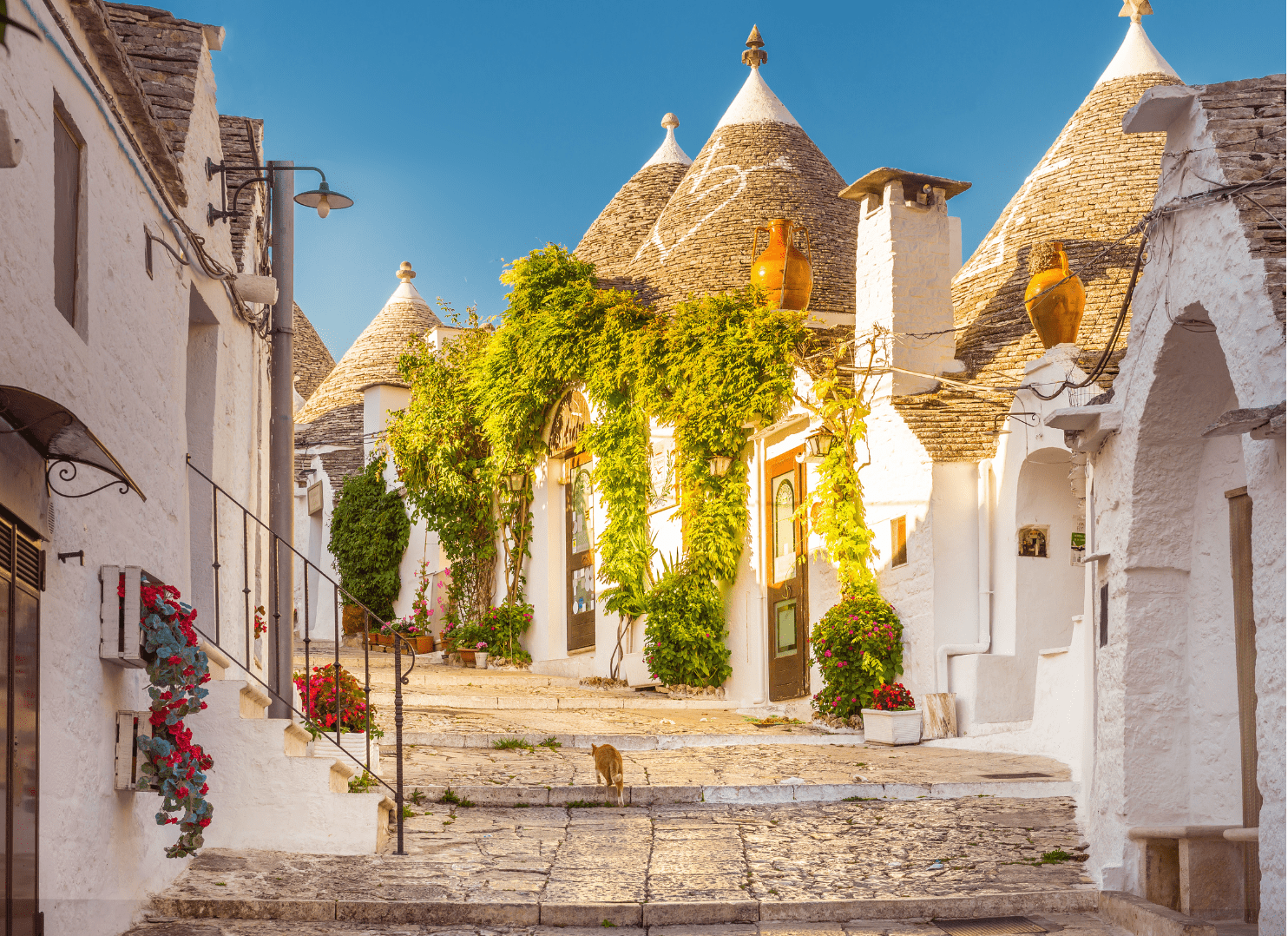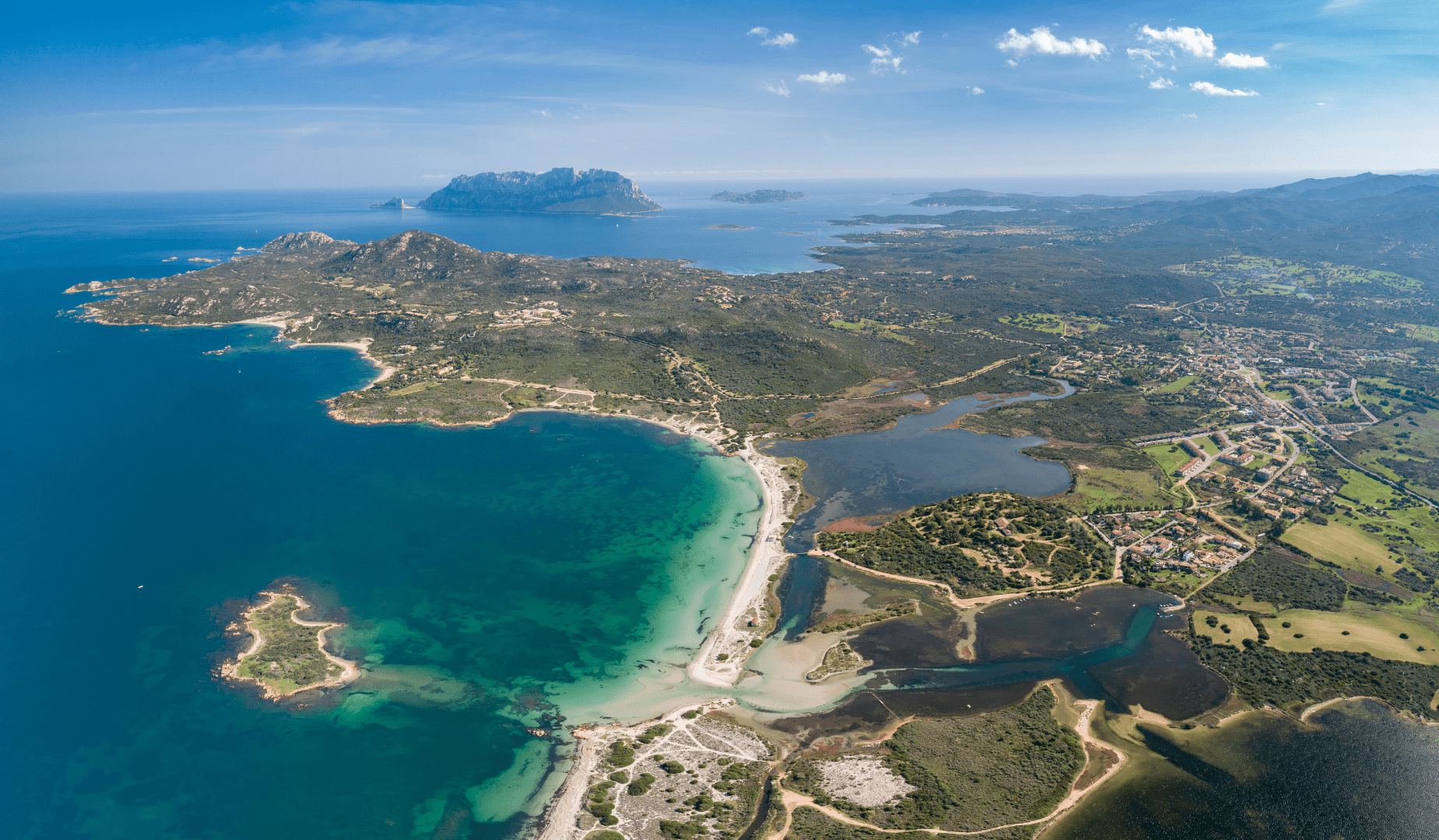DAY 1 ARRIVAL IN APULIA
Arrival at Bari Airport with, welcome by our Guide and transfer to the hotel. Accommodation in the rooms
reserved for you. Dinner, Overnight stay.
DAY 2 CASTEL DEL MONTE – TRANI & BARLETTA
Breakfast. Departure for Castel del Monte, a stone crown placed on a hill 540 meters above sea level, overlooking
the plateau of the western Murges in Puglia, Listed since 1996 as a UNESCO World Heritage Site.
Lunch in a restaurant. Barletta, is particularly known for the Colossus of Barletta,
a bronze statue depicting a Roman emperor (perhaps Theodosius II), called Heraclius, 4.50 meters high. It is the
tallest statue of the post-constantinian Roman Empire.
Trani, has preserved much of its medieval port district and a remarkable heritage. Its magnificent Romanesque
cathedral along the sea was built in the twelfth century, is dedicated to Nicholas the Pilgrim. The nearby castle dates
back to Frederick II of Swabia (XIII). It was Benedictine until the fifteenth century, then Franciscan until the
nineteenth century. Return to the hotel. Dinner, Overnight stay.
DAY 3 MANFREDONIA – SIPONTO
Breakfast. Departure for Siponto, an ancient Daunian city destroyed by an earthquake in the Early Middle Ages.
Lunch in the Restaurant.
Manfredonia, rises on the homonymous gulf in the province of Foggia. The undisputed symbols of Manfredonia are the
beautiful and well-preserved Swabian-Angevin Castle and the Cathedral of San Lorenzo Maiorano (1270-1274, rebuilt
in the eighteenth century), the Basilica of Santa Maria de Siponto (ninth century), built on an early Christian church,
and the Church of San Leonardo (XI century), 10 km from the historical center. Return to the hotel. Dinner, Overnight.
DAY 4 GROTTOES OF CASTELLANA – ALBEROBELLO
Breakfast. Departure for the visit of the Castellana Caves. Booked tour: it takes place along an easily accessible
route, and with the presence of multilingual expert guides. An extraordinary excursion in the caves about 70 meters
deep in a beautiful setting of stalactites and stalagmites. Lunch at the restaurant.
After lunch we leave for Alberobello, famous everywhere as the capital of the trulli.
Return to the hotel. Dinner, Overnight.
DAY 5 LOCOROTONDO – CISTERNINO – OSTUNI & LECCE
Breakfast. Departure for Locorotondo, gracefully perched on a hill in the heart of the Itria Valley and offers a
multitude of tourist attractions in a small radius. Locorotondo has about 1,400 inhabitants and the city is
characterized by its small alleys and the imposing cathedral. The city has a wide range of restaurants, bars
and shops. Cisternino dominates (with its 393 meters above sea level) the Itria Valley, a territory made unique
by the presence of its many trulli. The old town has its typical lime houses, its narrow streets dotted with
pelargoni, its arcades, its small loggias, its stone decorations and its stairs. The village, inhabited since the
Neolithic, witnessed the Norman-Swabian domination, the Aragonese and the Bourbon domination.
Lunch in a restaurant.
Ostuni, also known as the “White City”, evokes in some ways the villages of the Greek islands. The most important
buildings of the city are the cathedral (14th century) and the episcopal palace, and a number of family palaces.
At the end of the afternoon arrival in the region of Lecce. Check in in the hotel. Dinner, Overnight.
DAY 6 OTRANTO – LECCE
Breakfast. Departure towards Otranto, the easternmost city in Italy. Since ancient times, the city has been fortified
and its fortifications have been improved over time. The castle dates back to the 11th century. Lunch with wine
tasting. Particularly known as “the Florence of the South”, Lecce knows how to surprise tourists and visitors: its
ancient Messapian origins and archaeological evidence of Roman domination are combined with the richness and
exuberance typical of the Baroque style, churches and palaces in the city centre. Return to the hotel. Dinner,
Overnight.or dinner and overnight.
DAY 7 GALATINA – GALATONE & GALLIPOLI
Breakfast. Departure towards Galatina, a medieval Byzantine city, was very marked by the Greek presence.
The main building is the 14th century Basilica of Santa Maria d’Alessandria. Its mother church dedicated to
Saints Peter and Paul, has a beautiful baroque facade of the seventeenth century. Galatone, is home to several
churches including that of the Sanctuary Crucifix of the Pietà and remains of a feudal castle.
Lunch in the Restaurant.
Gallipoli is a charming fishing port on the Salento peninsula, open to the Ionian Sea and the Gulf of Taranto.
The old town, located on an island, retains typical alleys of Puglia, with a baroque cathedral of the seventeenth, a
Greek fountain of the sixteenth and many other interesting monuments. Return to the hotel. Dinner with
Tarantella show and typical music, Overnight.
DAY 8 MATERA – ALTAMURA & BARI
Breakfast. Departure for Matera, Not by chance Matera is also called the “second Bethlehem”, was the setting of
films such as “The Passion of Christ” by Mel Gibson and “The Gospel according to Matthew” by Pier Paolo Pasolini.
In 1993 UNESCO inscribed the Sassi di Matera on the World Heritage List, as a millennial system and model of
development that must be preserved for future generations. The Sassi are recognized as a model of life
in perfect harmony with the environment, integrating into it by exploiting its resources, without altering it.
Lunch at the restaurant. Altamura is known for its Cathedral of Santa Maria Assunta, an example of the Romanesque-Gothic Apulian
(13th century), but also for the discovery of the Man of Altamura, skeleton of a Neanderthal, and the passage of
dinosaurs. At the end of the afternoon arrival at the hotel in the province of Bari. Dinner, Overnight.
DAY 9 – DEPARTURE
Breakfast. Departure to Bari airport. Assistance in checkin operations. End of our services
N.B: The itinerary may vary depending on the
operational flights provided on request for quotation,
ensuring the services



